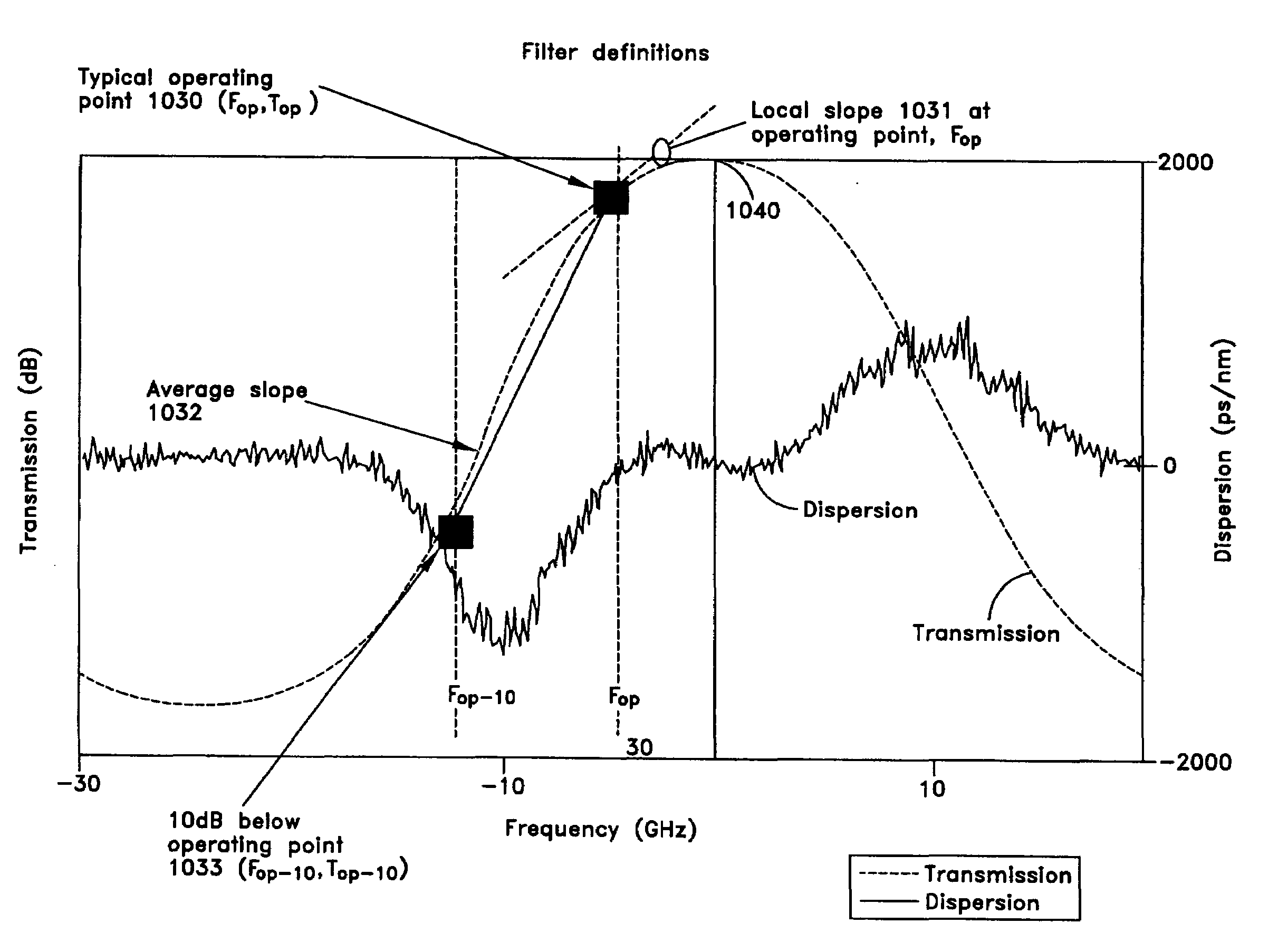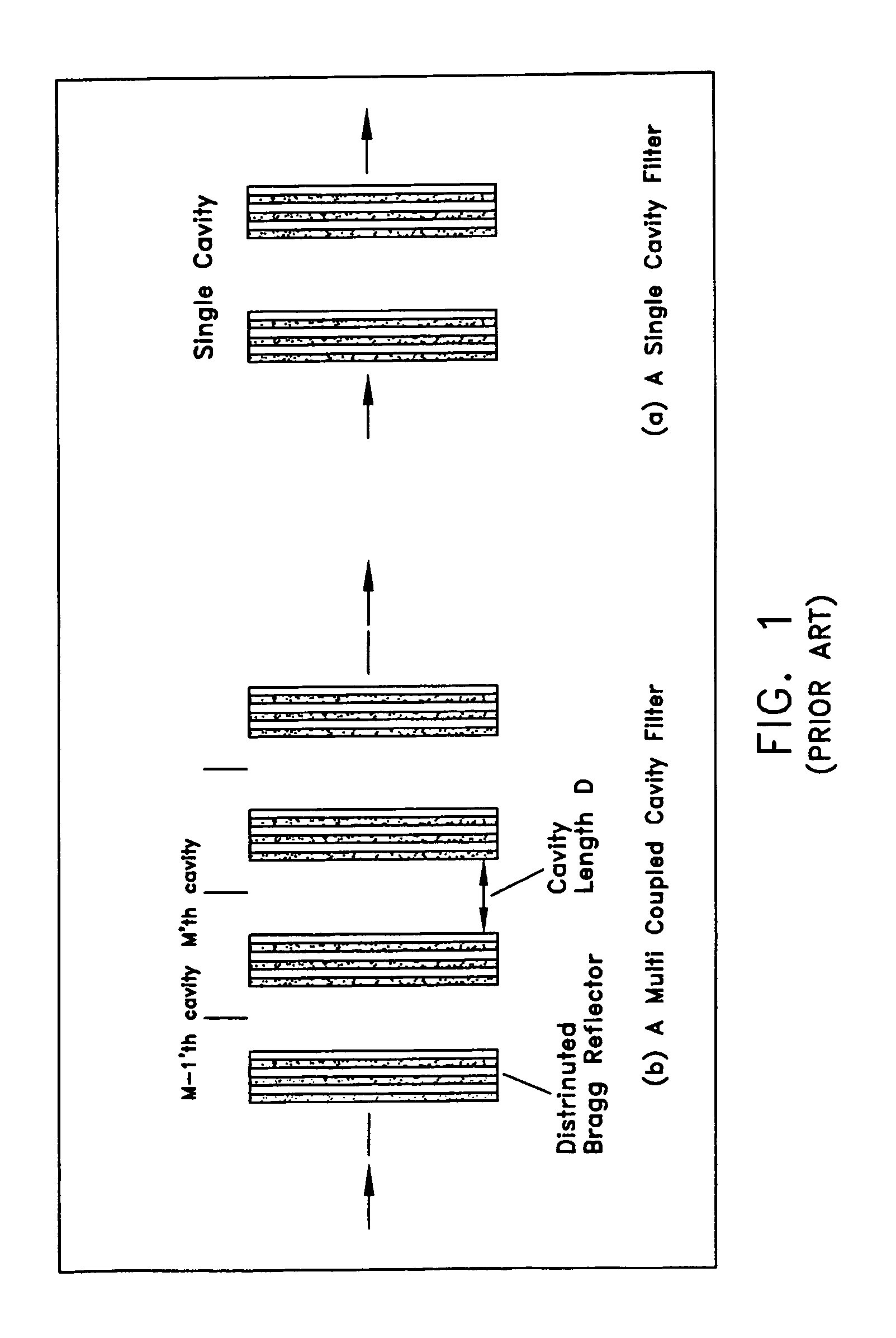Flat dispersion frequency discriminator (FDFD)
a frequency discriminator and flat-band technology, applied in the field of frequency discrimination, can solve the problems of optical signal distortion and limit the minimum bandwidth of filters in this application, and achieve the effect of minimizing the occurrence of distortion
- Summary
- Abstract
- Description
- Claims
- Application Information
AI Technical Summary
Benefits of technology
Problems solved by technology
Method used
Image
Examples
Embodiment Construction
[0044]The transmission spectrum of the FDFD filter may be determined based on the following. An ideal dispersion curve for a particular filter application is defined. Based on the ideal dispersion curve, the corresponding phase may be obtained. Then, the Kramers-Kronig relationship may be applied to calculate the transmission spectrum. A standard optimization and filter design package may be then used to synthesize the desired filter function starting from a close approximation. For example, a FDFD based on a 93 layer CMC may be used.
[0045]FIG. 6(a) illustrates that the filter dispersion may be selected so that it is equal to a negative constant −Dm for a finite band of frequencies, 2ω0, on the low frequency side of a center frequency, and equal to +Dm for a finite band of frequencies 2ω0 on the high frequency side of the center frequency. The frequency relative to the center frequency may be defined where the dispersion is defined in units of ps / nm and is related to the phase of th...
PUM
 Login to View More
Login to View More Abstract
Description
Claims
Application Information
 Login to View More
Login to View More - R&D
- Intellectual Property
- Life Sciences
- Materials
- Tech Scout
- Unparalleled Data Quality
- Higher Quality Content
- 60% Fewer Hallucinations
Browse by: Latest US Patents, China's latest patents, Technical Efficacy Thesaurus, Application Domain, Technology Topic, Popular Technical Reports.
© 2025 PatSnap. All rights reserved.Legal|Privacy policy|Modern Slavery Act Transparency Statement|Sitemap|About US| Contact US: help@patsnap.com



